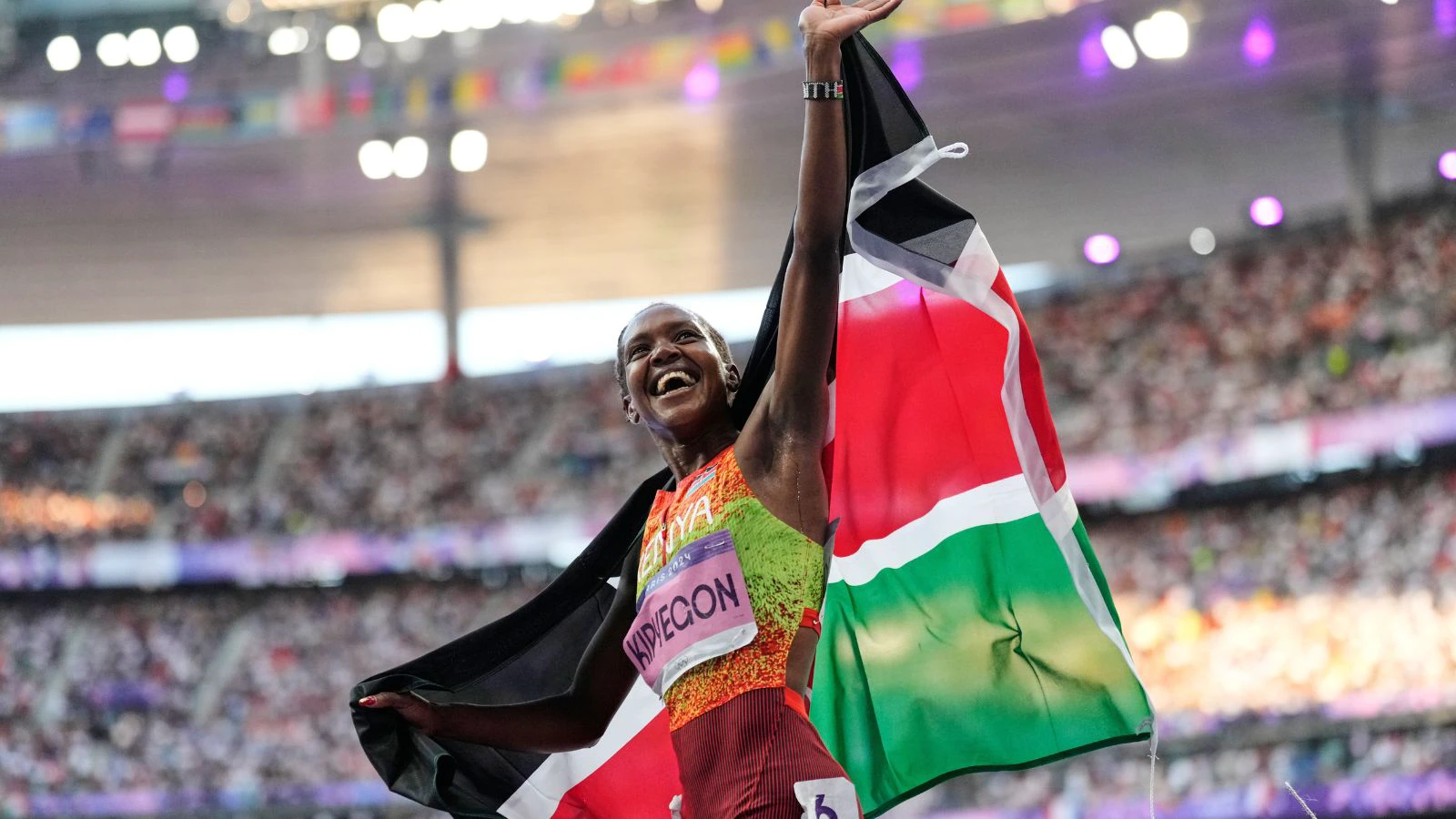A video from the World Cross Country Championship from 2010 shows a young Faith Kipyegon running barefoot on a slushy course as other athletes wearing colourful spikes rush alongside.
In the Championships in Bydgoszcz, Poland, her first competition overseas, she finished fourth in the junior category, marking the start of an exceptional career. Her crowning glory were gold medals in the 1,500 metres in Rio, Paris and Tokyo, the first woman to win a hat-trick of Olympic titles on track.
“I was just a young girl coming from the village without shoes and without spikes. That (cross country) was my first international race. What is still in my mind and it will remain in my heart is that young girl running barefoot. It really inspires me to keep on pushing myself,” Kipyegon says in the documentary titled Breaking4 released to coincide with her targeting what is perceived as impossible – a woman running the mile under four minutes.
Seven decades after England’s Roger Bannister became the first man to break the barrier at the Oxford University’s cinder track at Iffley Road, Kenyan Kipyegon will attempt to achieve a breakthrough for women at the Stade Charléty in Paris. At this venue, she rewrote her 1,500 metres world record last July, so good memories will come rushing back.
She’s got the world of distance running at her feet now, but when she started off she was like many of the budding runners from Kenya hoping to make it big. Running shoes were a distant dream, a meal on some days was uncertain. “Our parents couldn’t afford to have everything like shoes and clothes. When you don’t have something, you can sometimes go to bed empty stomach or you go to the neighbour to get something to eat,” Kipyegon recalls about her modest origins.
 Faith Kipyegon, of Kenya, celebrates after winning the women’s 1500-meter final at the 2024 Summer Olympics, Saturday, Aug. 10, 2024, in Saint-Denis, France.(AP Photo/David J. Phillip, File)
Faith Kipyegon, of Kenya, celebrates after winning the women’s 1500-meter final at the 2024 Summer Olympics, Saturday, Aug. 10, 2024, in Saint-Denis, France.(AP Photo/David J. Phillip, File)
After she won the 1,500 metre gold at the Rio Olympics, her village Ndabibit in Kenya’s Nakuru County was electrified. “I was just happy to get home and see light after the dark for so many years.” Till that point, her parents travelled to the nearby village to watch her running on television.
However, despite the early struggles, Kipyegon’s ambitions have always been grand but on Thursday the great athlete will be up against it. Kipyegon’s world record in the mile is 4 minutes and 7.64 seconds. Even with all the advanced running tech designed to make her quicker, going two seconds faster per lap will be a special feat.
Similar to when her countryman Eliud Kipchoge became the first to run the marathon in under two-hours in Vienna six year ago, Kipyegon’s race will be in a controlled environment. Standard competition rules don’t apply, so a record won’t stand.
To help women dream
But like Kipyegon said last week during a media conference, it is about the drive to prove, ‘that what a man can do, a woman can do’.
“I think it will really cement my legacy. It will give hope to the next generation and women to believe that we can expand our boundaries, dream big and just believe in ourselves that we can do it. So I think it will give hope to other women that this would be possible,” Kipyegon said.
She will have upto five pacemakers running in a specific pattern, a specially designed sports bar that retains less moisture and an aerodynamic suit and head band designed to reduce wind resistance.
On her feet will be cutting-edge running shoes weighing less than 90 grams each, says a Nike official in the documentary. “I could go very fast with these shoes,” Kipyegon reckoned. Along the side of the track, pacing lights will help her run at optimal speed.
Kipyegon vs the Four-Minute Mile, Breaking4 and Moonshot is what promos are dubbing the history-in-the-making run. Kipchoge’s first attempt was called Breaking2, his second INEOS 1:59. In the first run at the Monza race track he missed the mark by 25 seconds before ‘bettering’ the two-hour mark in Vienna. It’s unclear if Kipyegon will have another go if she falls short on Thursday.
Kipyegon’s long-time be so good to see (the time) under four minutes. Eliud has inspired me a lot,” Kipyegon said last week. “If we achieve what many people think is impossible, it will be special for me, my family and fans.”
Kipyegon is aiming for the moon, but a study published in the Royal Society of Open Science gives her a good chance of breaking the four-minute barrier if she can take advantage of the slipstream, or the area of reduced air resistance, created by the pacemakers.
The study published in February this year, concludes that “with greatly improved aerodynamic drafting, the current record holder, Kipyegon, could break the 4-minute mile barrier.” The timing achieved could be an eye-popping 3:59.37. A pacemaker 1.2 metres ahead of Kipyegon and another 1.2 metres behind, the study says, is ideal but there is a world of difference between scientific simulation and real-time running on the track.
While training in Kaptagat, Kipyegon said there were no major changes to her workouts.
“The mindset is different, but the goals are the same. Dreaming of breaking four. For training, I would say I didn’t change much. My coach always tells me that I have to dream and just be patient for it.”
A dream that took shape when she started running barefoot many years ago.
